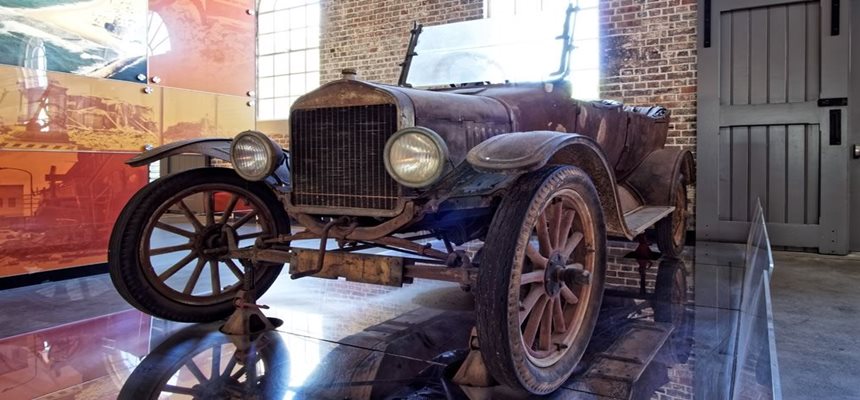Model T Ford

The Model T Ford was donated by Reilly Barrett. There are many stories that this car and the museum can tell. What story would you have told?
Industrial History
The Model T Ford was not the first car but it was the most significant car of the 20th century. Henry Ford revolutionised mass production with moving assembly lines and the standardisation of parts. His purpose for the Model T Ford was to provide affordable cars for the masses, as previously cars had been hand crafted for the wealthy. Over 15 million were made and by the 1920s, every second car on the world’s roads was a Model T Ford.
Trade and Colonial History
This car was not made in the USA. Our Ford is the result of 1920s British Empire bonds and Australian trade policies. The majority of cars on Australian roads were imported as CKD (Completely Knocked Down) chassis. Australian coachbuilders, such as Holdens, TJ Richards and Steenbhom, made the ‘top’/body of the car. All pre-1925 Ford chassis in Australia came from the Ford factory in Canada, our Commonwealth sister.
Immigration History
Steenbhom Motor Bodies of Alexandria, NSW, created our car’s body. Prussian born, Aaron Moses Steenbhom immigrated to Australia in the 1850s. Aaron’s descendants began a horse-drawn coach company and then turned to motor bodies before 1905. The family run company employed 400 and had strong ties to Davis & Davis, now AGC. The first car bought by hire purchase in Australia was a Steenbhom bodied Ford. The company closed in 1927 but Steenbhom descendants still live in Sydney today.
Individual Owners History
This car can also tell its own personal story. Richard Venables bought the car in 1933 for his mother but she never drove it. The car was changed some time after manufacture because the 1923 car has a 1927 back axle. Richard Venables, a former grape farmer from Wallacia, died in 2002.
Restoration versus Conservation
“Why is it rusty?” The Model T Ford has been a long time favourite for car restorers and thousands of restored examples exist worldwide. This Model T, in contrast, is almost completely original. It still has horsehair stuffing, original paint, nameplates and a wooden body. This Model T is as a valuable research tool. Museums conserve objects with signs of wear and their history intact rather than restoring to a new appearance.
Many objects were found inside Model T at donation. Spare parts could indicate thrift, an unreliable car or desire to restore. The rags tell the story of the changing clothing styles of the mid-1920s, the rayon women’s dress scraps and the men’s button fly trousers with suspender attachments. The common shed finds of empty food tins (for nuts and bolts), the radio and teapot indicate a lot of time spent tinkering in the shed.











